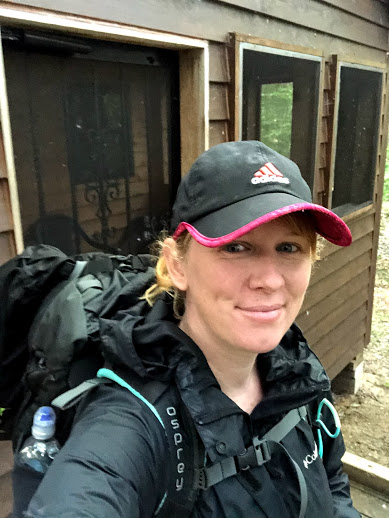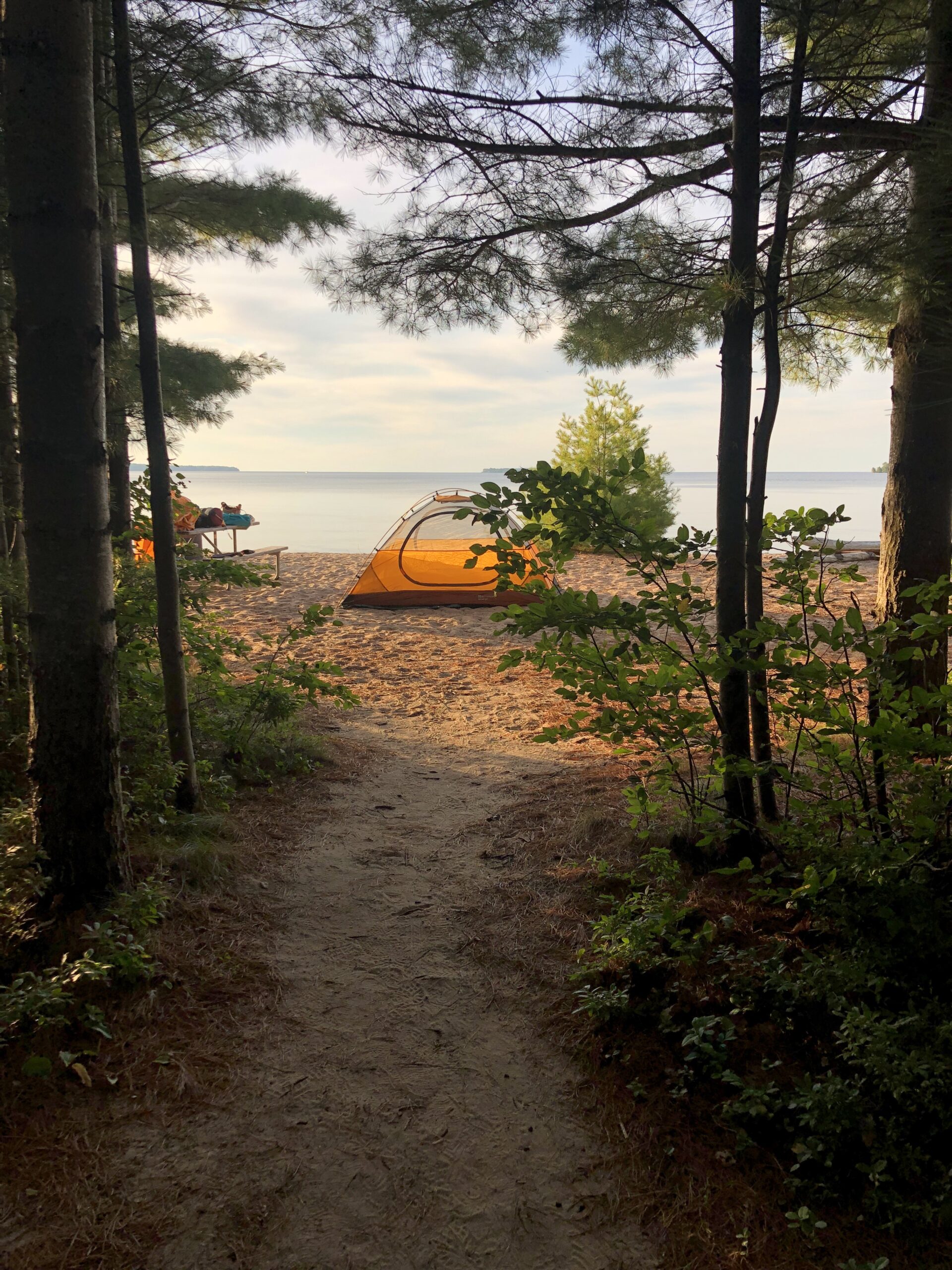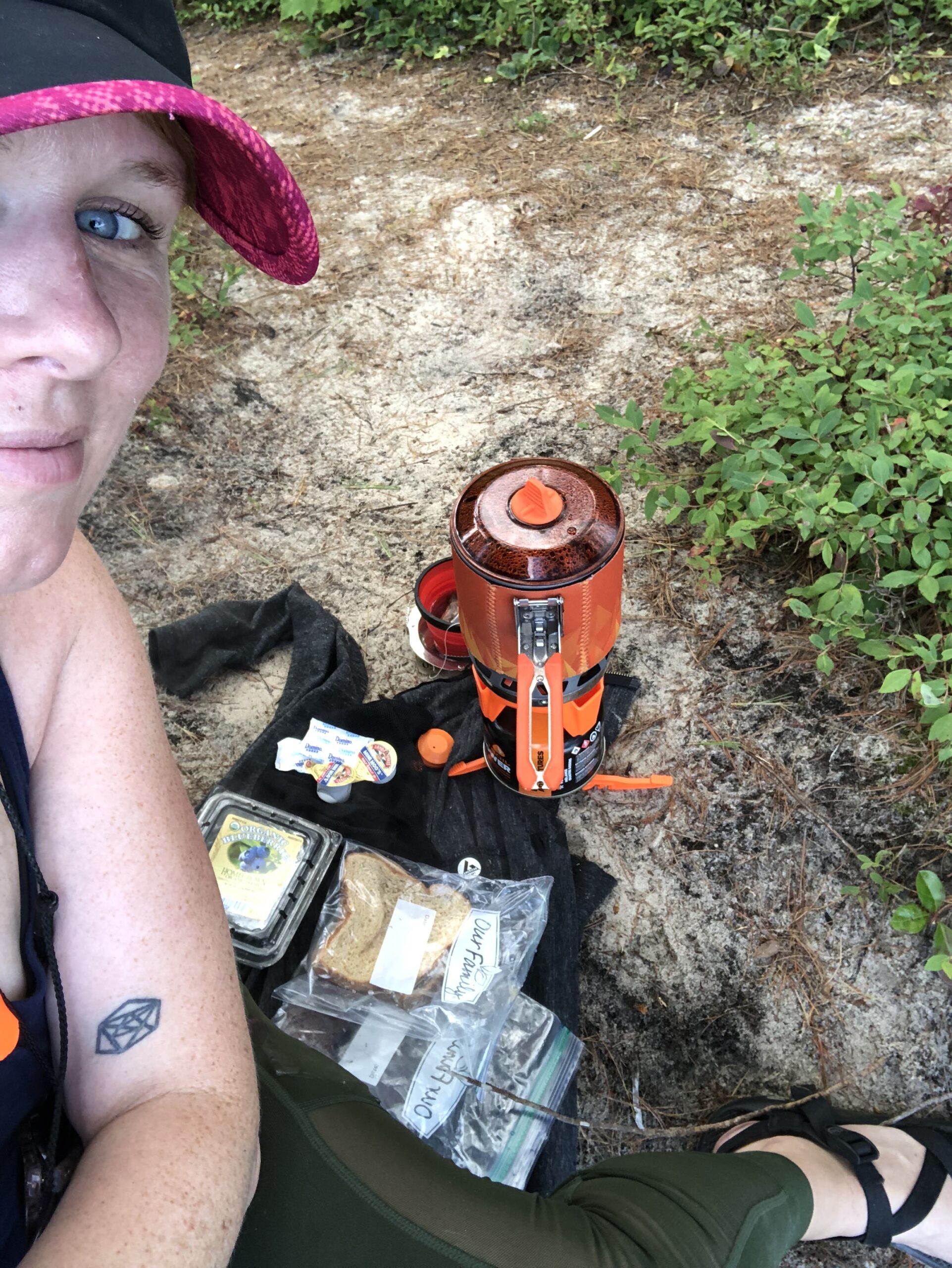If you want to start having more outdoor adventures, one of the biggest things getting in your way may be a lack of “stuff”. I totally understand! Up until three or four years ago, I had almost no outdoor gear beyond a family-sized tent, a heavy old sleeping bag, and some hot dog roasting forks (which, by the way, was enough for plenty of car camping adventures!)
Over the past few years I’ve amassed quite a nice collection of camping, backpacking and hiking gear. Since my budget is definitely limited, it’s been a slow and gradual process. I prioritize cost and quality based on my own goals and needs, shop sales when possible, and lean heavily on my local outfitter for advice and guidance. My gear library is definitely still incomplete and I imagine I will be adding to it for decades to come.
90% of my purchases are made locally, and the other 10% have been deals I’ve found online when the “better” brand proved to be either outside my price range or just not that important for my needs. The gear I’ve amassed has seen me through a variety of beginner- to intermediate-level experiences, from strolls on local trails to backpacking trips and week-long camping and hiking adventures.
I’m far from an outdoors expert – just someone who’s learning (and buying) as I go. Here’s what’s in my current gear stash, as well as some of the things I am planning to buy in the next year or two:
backpack:

A good backpack is an investment, and the right fit and features can make or break your adventure. So I took my first “real” backpack choice seriously. This is one purchase where I’d really recommend you go get professionally fitted, or at least, contact a reputable outfitter for advice.
Three years ago, after giving my local outfitter, Wanderlust, a lot of details about my goals, lifestyle, and preferences, I wound up purchasing the Osprey Kyte 36 liter women’s backpack.
A couple of votes for seeking a personal fitting (or at least, a consultation + a good exchange policy):
First of all, the size I thought would fit me best was NOT the size I wound up with (which fits perfectly and feels wonderful even after hours of hiking). There was no way I could have made that judgment on my own; I really needed to get good advice about how it should fit and then try on a few.
Second, I really appreciated that the staff at my outfitter didn’t try to talk me into a larger pack. I felt comfortable with the 36L for a few reasons: I knew I wouldn’t be embarking on any 2-3 day backpacking trips right away, and even if I did, I’d almost certainly be with another person so we could divvy up some of the bulk. For a one-night trip in the summer or fall, the 36 liter size seemed like it would work just fine, but would be comfortable for a beginner while forcing me to be strategic about what I packed. I have been really happy with my Osprey Kyte 36L and am grateful nobody tried to up-sell me before I was ready.
That said, a few years in, with more experience under my belt and bigger adventures on the horizon, I’m feeling ready to upgrade soon – probably to something like the Osprey Renn 50 liter women’s backpack.
In the meantime, I added an Osprey Daylite pack to my repertoire. It’s great for short, casual hikes and I have also figured out how to rig it up to my Kyte for when I just need a little more space.
Bottom line: be open to advice and inspiration, but realistic about your needs. The biggest pack isn’t necessarily the best for what you want to do with it. Comfort and functionality matter a lot, so don’t skimp on a personalized fitting if you can swing it. Oh, and keep an eye out for deals: even your local small-town shop will have them a few times a year.
tent:

Here’s where I admit that I have mostly skimped on fancy tents – for lots of reasons.
First of all, the difference between a true, ultralight backpacker’s tent and the “backpacker” tents you can get for under $100 on Amazon are usually about a pound or so. That’s a huge difference if you’re through-hiking the Appalachian trail; not really a deal-breaker if you’re hiking into a rustic campsite a mile from the trailhead (more my speed, currently).
Second, I have five kids and we often go on trips where we are using two or even three tents at once – so affordability is important.
Third, when I was shopping for small tents for my first backcountry camping excursion, I’d already blown a lot on my backpack, hiking shoes, sleeping bag and a few other key purchases. I just didn’t have enough left for an expensive tent! Based on ratings, reviews, and weight, I wound up purchasing these two tents on Amazon:
- Bessport 2-person backpacking tent At 5.2 lbs this tent adds more weight to your pack than many true lightweight tents, but for a quick hike or car camping excursion it’s a great solution – especially for less than $100. I use this one for my yearly mother-daughter car camping trips with Clara and we are able to quickly and easily put it up – plus with two doors we aren’t constantly climbing over each other.
- Featherstone 2-person backpacking tent – This tent is just over $100, and at 4 pounds is not much heavier than the more expensive backpacking tents. It also gets some great reviews on Amazon. This one is a bit wider than the Bessport and without the rain fly on it, is pretty much completely mesh and open to the air – which you may or may not love.
Honestly, I’ve been really happy with my “bargain basement” tents so far, but if I were going to be doing some longer hikes I might consider something like the Nemo Dagger 2-person backpacking tent, at 3.5 lb.
The Dagger is considerably more expensive than the two small tents I own, but on long hikes, a half pound could make a big difference – plus it has fun features like two vestibules which makes camping with a partner that much more enjoyable. I’ll keep an eye on it, and buy it if it goes on sale.
Sleeping Bag & Pad:
Friends, I really REALLY enjoy a good night’s sleep, so a comfy sleeping bag is a BIG DEAL to me. About two years ago I scored an amazing clearance deal on a NEMO Rhumba sleeping bag , which has since been replaced by the NEMO Disco 30 women’s sleeping bag.
At 2 lb 6 oz the Disco packs down extremely small and light. The Rhumba is lightweight too, but the Disco also features strategically-placed zippers that allow you to “dump heat” in the night (that is outfitter talk for “relieve some of the pent-up heat trapped in your bag without unzipping at the shoulders so you wind up freezing.”)
It’s also important to point out that while the Rhumba and Disco are both sleek, low-profile bags, they are made in a “spoon” shape rather than the “mummy” bag many of us associate with lightweight bags. That means they have more room in the hips and leg area which is a lifesaver if you are a side sleeper or just feel super claustrophobic in a too-narrow sleeping bag.
I have zero complaints about my Rhumba, but have also considered picking up the NEMO Mezzo Loft wide rectangular sleeping bag for women for short backpack camping or car camping adventures. At over 4 lbs it’s not nearly as light as the Disco or Rhumba, but just look at all that leg room!
Adding some padding…
Your sleeping bag is just one part of the equation when it comes to a comfortable night’s sleep. First of all, your sleeping bag’s rating – i.e. the temperature it’s “rated” to – only means it will keep you from freezing to death at that temperature or above; it’s not necessarily guaranteeing comfort. A pad is needed to keep you warm and cozy on chillier nights, and of course, will also make a big difference in neutralizing lumps, twigs, roots, and rocks under your tender flesh.
Choosing a sleeping pad can be quite confusing as there are a lot of factors in play. For example, the Klymit Static V2 sleeping pad is just over a pound but very narrow, meaning it might be rough going if you move around a lot at night. The NEMO Tensor Wide sleeping pad is 25″ wide, but rated to only 35-45 degrees and even though it’s light, it’s not self-inflating. Think carefully about your needs and be prepared to be disappointed when no sleeping pad makes your night under the stars perfectly comfortable. (Sorry, friends.)
When I car camp, I use a regular bed pillow which definitely makes my sleep a little better. For hike-in camping, an inflatable camping pillow is lightweight, small and makes a big difference in my comfort level.
I also own an ENO double hammock, which my son has slept in for several nights in a row, but I have only used it for casual naps at the beach. I love the idea of sleeping under the stars while rocking gently between two trees, but I am a little worried about being cold with the air circulating under the hammock. This underquilt for an ENO hammock is a tempting purchase and is definitely on my “nice to have” list.
eating & drinking:

When it comes to eating on the trail or in camp, my needs are pretty simple. Some sandwiches, berries, and maybe a granola bar or two, and I’m good to go.
That said, I still like to wake up with a hot cup of tea every morning, and being able to add boiling water to a packet of oatmeal or soup mix adds some nice variety to my usual standard fare.
And no matter how simple the food, clean water, receptacles and utensils are necessary! Here are a few water- and food-prep purchases I believe belong in any basic backpacking gear stash:
- LifeStraw or other water filtration system.
Number of times I’ve actually had to use my LifeStraw: Zero.
Number of times I pack it anyway because it’s super lightweight and the last thing I want is to get lost on the trail and run out of potable water: every time.
Plus, the kids think it’s fun. Just bring it.
I love my collapsible silicon mug and use it for tea, oatmeal, soup, ramen, and basically anything else that needs a container. The spork is lightweight, simple, and gets the job done. No need to overthink these purchases when you’re just starting out.
For quickly heating water on the trail or in camp, you can’t go wrong with this easy-to-use cooking system. This is another example of a purchase where I went with the cheaper option with fantastic reviews, rather than the “name brand” choice. I know the Jet Boil is a household name, but for my needs the Wild Wind has done very nicely and at just a little over half the price. Perhaps I’ll upgrade eventually…but I’d have to have a good reason.
other gear:
Once you’ve figured out what you’ll eat and drink, what you’ll sleep on and in, and how you’ll carry the whole mess to your campsite, you’ll want to consider things like light, fire, and personal safety. Here is a (non-exhaustive) list of other gear I always have in my pack:
- Petzl Tikka headlamp – a headlamp makes navigating, heading to the latrine, or setting up camp in the dark so much easier. There are definitely fancier options on the market, but I’ve used this one for several years with no complaints.
- Black Diamond Moij Charging Station and Lantern – While hastily making last-minute packing decisions before boarding the ferry to a rustic island, I opted to leave my charging station/250 lumen lantern in the car. Mistake. First of all, my headlamp was no match for the poor light in my cabin, which was surrounded by thick woods and dim all day long. Second, that charger would have REALLY come in handy as I was taking photos all day and my phone was often searching for signal. I won’t leave it behind again.
- Gerber Remix Serrated Knife – You just never know when you might need a knife. Make it a sturdy, practical one.
- Fire Sticks – Making a fire is a snap with lightweight fire sticks. You can also improvise with cotton balls, dryer lint and even orange peels, but these sticks are cheap and reliably effective.
- Safety Whistle – while hiking, paddling and camping alone, I’ve just always felt better with a whistle around my neck. It’s lightweight and cheap, so why not?
what to wear:
As far as clothes go, I’ve mostly worn regular athletic wear (workout/yoga leggings and tops in synthetic fabrics, layered with hoodies, fleeces, etc depending on the weather) when I camp or hike. Pockets are a must to keep my phone, lip balm, tissues, insect repellant wipes, etc within easy reach.
While I haven’t invested in camping-specific pants yet, that’s next on my list and I will probably buy the prAna Halle pant or Kühl Horizn convertible pants soon. I like the idea of a super fast-drying, breathable material and zip-off leg, and on longer hikes I can definitely see how these would make me more comfortable.
I have also happily invested in good footwear and functional outerwear. Here are a few specific purchases I’ve made:
- Outdoor Research rain jacket. I love the fit, the zip-open armpits for easy cooling, and the fabric. this is my third rain jacket in 3 years since I’m terrible about losing them, but I wear it a lot – even when not spending time in nature.
- Chaco Sport Sandals. Chacos are sturdy, solid, and feature aggressive arch support. They’re great for hikes on flat terrain, wading in lakes and streams, and wearing in-camp.
- Salewa Alp Flow hiking boots. I am in love with my Salewa hiking boots. Great ankle support, comfy, well-ventilated, and cute, to boot (har har).
- Salewa Wildfire GTX hiking shoes. Also a solid choice for hiking or just running around town, with a sleeker profile and more sneaker-like fit.
- SmartWool socks. I’m kind of obsessed with SmartWools and have a variety of styles to match different occasions and needs. Wicking, breathability, warmth, comfort – they’ve got it all and are so much better on the trail than your typical cotton crew.
Phew! That’s a lot of gear – and I’m sure this list is overwhelming. Remember, you don’t have to start with ALL this stuff. See what you can borrow, buy second-hand, or pick up on clearance; you’ll likely find some deals and can put together enough gear for your first outing.
Keep your specific trip in mind – if you’re pulling up to a campsite and won’t be hiking further than 100 feet to the bathroom, your needs will be different than if you’ll be packing your tent, food, and sleeping gear a mile.
And most of all, be sure to keep asking questions! An independent outfitter or outdoorsy friend can be great resources while you’re cobbling together your personal “must have” gear list. Stay curious and keep an eye on sales; pick up a few things here and there when you have room in the budget.
Pretty soon you’ll have a great gear collection of your own – and you’ll be ready for almost any adventure. Have fun deal-hunting, shopping, and dreaming! Soon maybe you’ll be planning your own solo outdoors adventure.
